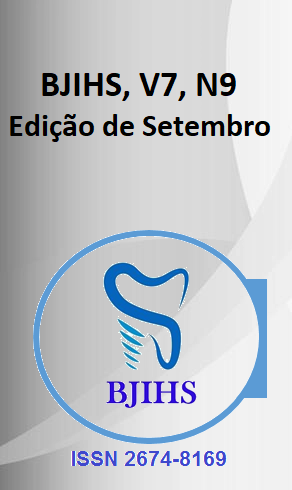Abstract
The assessment of aesthetic damage is a frequent challenge forensic occupational examination, particularly in cases related to occupational accidents. This type of damage may have moral, material, and social repercussions, affecting not only the victim’s self-image and self-esteem but also their work capacity and interpersonal relationships. The AIPE scale (Assessment of the Impact of Aesthetic Damage), already translated and validated for Brazil, is a valuable tool to reduce subjectivity in aesthetic evaluation. However, its complete application, involving multiple tables and variables, may be too complex for routine forensic practice. This study presents a proposal for a simplified version of the AIPE scale, focusing on the measurement of dental and facial aesthetic damages in forensic occupational examinations. The simplified version retains the five fundamental parameters: (i) visual confirmation of the defect; (ii) tendency of the observer’s gaze to fixate on or avoid the defect; (iii) memorability of the injured individual’s image; (iv) intensity of the emotional response; and (v) possibility of impact on interpersonal relationships. The main modification is the direct use of the seven official categories of classification (from “not relevant” to “extremely important”), replacing the continuous scoring system of the original instrument. An experimental application in five patients yielded consistent results: two cases were classified as “not relevant,” two as “moderate,” and one as “extremely important.” These findings suggest that the simplified AIPE scale enhances objectivity, clarity, and practical applicability without compromising assessment accuracy. In conclusion, the simplified AIPE has the potential to standardize the evaluation of aesthetic damage in forensic occupational examinations, contributing to transparency and reproducibility in expert reports. Therefore, it strengthens the technical-scientific basis of forensic dentistry and medicine, providing a systematic and accessible tool for professionals in the field.
References
Crosato EM, Konflanz AL, Fernandes MM, Zimmermann RD. A Odontologia Legal em perícias no contexto da saúde no trabalho. In: Franco A, Damascena NP, Deitos AR, Machado CEP, organizadores. Odontologia legal – doutrina e prática pericial. São Paulo: Editora Manole; 2023. p. 142-153.
Bouchardet FHC, Cobo Plana JA. Utilización del método "AIPE" en la valoración del perjuicio estético y su aplicación en la legislación brasileña civil y penal. Rev Port Dano Corp. 2011;22:167-81.
Fernandes MM, Cobo Plana JA, Bouchardet FCH, Michel-Crosato E, Oliveira RN. Validação de instrumento para análise do dano estético no Brasil. Saúde Debate. 2016;40(108):118–30. doi:10.1590/0103-1104-20161080010.

This work is licensed under a Creative Commons Attribution 4.0 International License.
Copyright (c) 2025 Alexandre Lazzari Konflanz, Wellington Menyrval Zaitter, Edgard Michel Crosato
